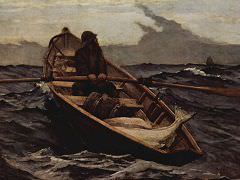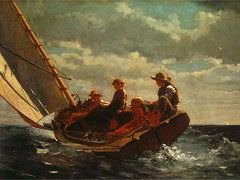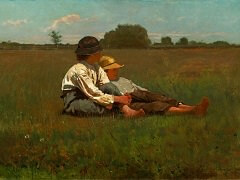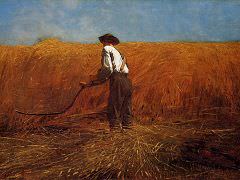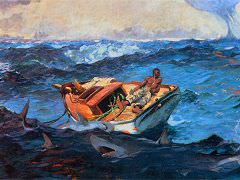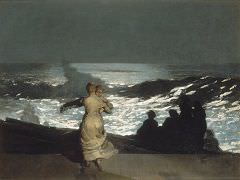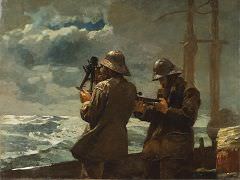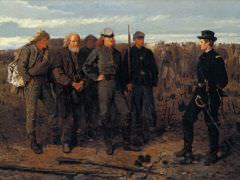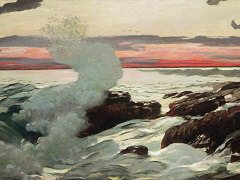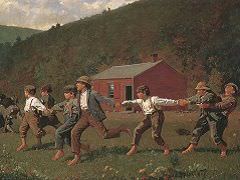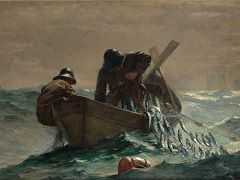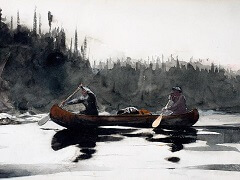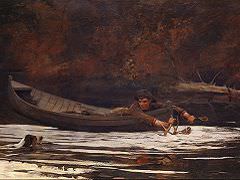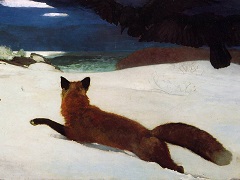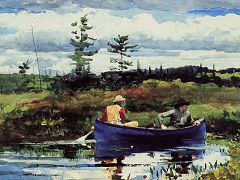Driftwood, 1909 by Winslow Homer
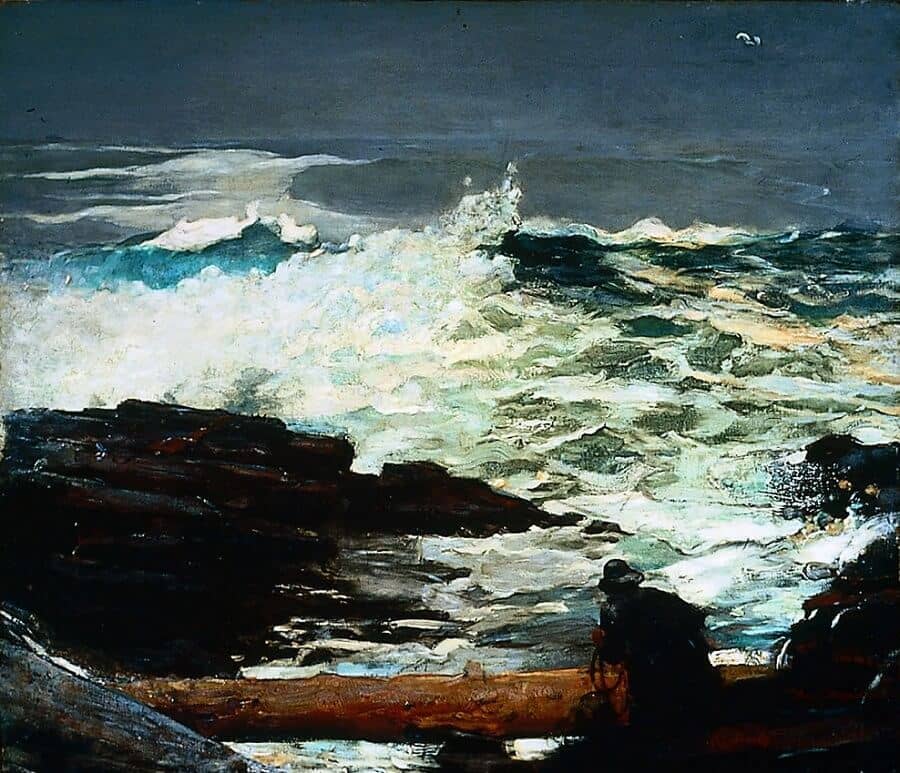
Winslow Homer is perhaps best known for his dramatic views of the rugged coastline of New England, as depicted here in Driftwood. Homer first visited the coast of Maine in 1875. Eight year later he moved to a remote coastal spot called Prout's Neck, where he lived for the remainder of his life. At this time the New England coast was widely associated with the dangers of the fishing and whaling industries, the latter encapsulated in Herman Melville's novel Moby Dick.
In Driftwood, the sea itself is the main subject, and Homer successfully conveys the sheer force of nature with its potentially devastating impact upon frail humanity, How Homer's stormy seascapes were also heavily influenced by the work of earlier artists including, most notably, William Turner's (1775-1851) paintings of storms at sea, His works can also be compared with the dark and sketchy, stormy seascapes of Homer's American contemporary Albert Pinkham Ryder (1847-1917).

